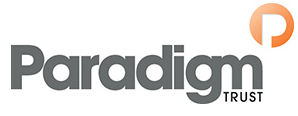2 Year Schedule for KS1/2
In order to cover the range of the art and design and design technology curricula, we have planned a two year sequence from year 1 to year 6.
2021/22
| Year 1 | Year 2 | Year 3 | Year 4 | Year 5 | Year 6 | |
| Aut 1 | 3D – clay | 3D – clay | Structures | Structures | Food Technology | Food Technology |
| Aut 2 | Food Technology | Food Technology | 3D – metal | 3D – metal | Printing | Printing |
| Spr 1 | Mechanical Systems(axles & wheels) | Mechanical Systems(axles & wheels) | Food Technology | Food Technology | 3D – clay | 3D – clay |
| Spr 2 | Structures | Structures | Printing | Printing | Electrical systems | Electrical systems |
| Sum 1 | Printing | Printing | Electrical systems | Electrical systems | Structures | Structures |
| Sum 2 | portraits including mixed media | portraits including photography/digital | portraits including mixed media | portraits including photography/digital | portraits including mixed media | portraits including photography/digital |
2022/23
| Year 1 | Year 2 | Year 3 | Year 4 | Year 5 | Year 6 | |
| Aut 1 | Painting | Painting | Textiles | Textiles | Food Technology | Food Technology |
| Aut 2 | Mechanical Systems(sliders and levers) | Mechanical Systems(Sliders and levers) | Painting | Painting | Textiles | Textiles |
| Spr 1 | Collage | Collage | Mechanical Systems(levers and linkages) | Mechanical Systems(levers and linkages) | Painting | Painting |
| Spr 2 | Food Technology | Food Technology | Collage | Collage | Mechanical Systems(pulleys or gears) | Mechanical Systems(pulleys or gears) |
| Sum 1 | Textiles | Textiles | Food Technology | Food Technology | Collage | Collage |
| Sum 2 | portraits including mixed media | portraits including photography/digital | portraits including mixed media | portraits including photography/digital | portraits including mixed media | portraits including photography/digital |
KS3 Art and Design
| Rotation | Year 7 | Year 8 | Year 9 |
| 1 | “The Lost Words” as a source book, illustrations by Jackie Morriss & written by Robert Macfarlane. Bernard Palissey’s ceramics (Pencil and Clay) | Chris Ofilli/ Stephen Lawrence (Textiles) | Identity (Technical drawing) |
| 2 | Observational drawings from leaves etc collected from Orwell Country Park. (observational drawings) | Bob and Roberta Smith | Linocut outcome/ clay outcome |
KS3 Fitness and Nutrition Overview 21/22
At KS3, the food technology elements of the National Curriculum for DT are taught within Fitness and Nutrition.
| Year 7 (10 week rotation) | Year 8 (10 week rotation) | Year 9 (x1 2hr slot every two weeks) |
| To ensure that the necessary level of health and safety is achieved when cooking. | Ensuring the necessary level of health and safety is achieved. | Health and safety checks |
| Multiple ways of utilising the egg (Small meal ideas/swaps) | How do we increase nutritional value? | Healthy snacks, alternatives to traditional |
| Looking into the terms ‘input’ &’ output’ | Exercise & Nutrition – Governments recommendations diet and exercise | How to increase the nutritional value of a dish by adding |
| To identify the Macronutrients within the dish (Healthier swaps) | Making of healthy lunch alternatives | How to increase the nutritional value of a dish using swaps |
| How to increase the nutritional value of a dish | Unhealthy lifestyles and dietary deficiencies | The effects that cooking has on an ingredient |
| Eating disorders | Looking into yeast | In depth view of a balanced diet? Food nutrients, Athlete’s diet, Meal planning, Healthier eating at home. |
| Display of work: ‘healthy swaps’ or a ‘macronutrient’. | A range of roles and jobs within catering | Looking at how food impacts the bodies’ development. |
| Exploring what traditional cooking is | Reasons why breakfast is an important part of a healthy diet | |
| Display work; ‘eating disorder or cooking method. | Nutritional content of dishes | |
| The effects of an unbalanced diet | ||
| The effects of social, mental and physical factors on health | ||
| The effects on time when planning meals and factors that affect weightings | ||
| Government’s recommendations of nutrition. |
